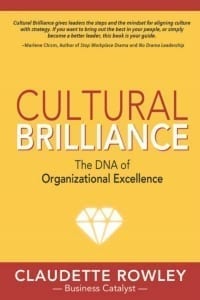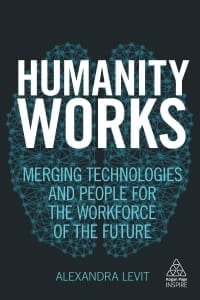Do Your Employees Tell You the Truth? How to Foster an Environment Where They Do

Will your staff give you a laundry list of opportunities for improvement, an overview of key issues that hold your company back, or nothing of substance? Do your employees feel emotionally safe enough to have these authentic conversations? And if not, why?
These questions are at the heart of building a brilliant culture, an organizational culture that is driven by authenticity, adaptability, and a willingness to listen. In several decades of organizational business consulting, I’ve found that culture often distinguishes truly successful and healthy organizations from their dysfunctional counterparts. And one of the biggest indicators of a brilliant culture is a willingness—of everyone in the organization—to both tell the truth and listen. Truth-telling is essential to building a brilliant culture, but it doesn’t happen without leaders and managers who are willing to listen to what they hear and meet people where they are.
As a manager, the impetus falls on you to set that tone. Ask yourself: When I do annual reviews, sit down to discuss key issues, or collaborate on problem-solving, do people speak honestly with me, without fear of repercussion? If they don’t, what’s keeping them from doing so?
How to Foster a Safe Environment
One of the best ways to foster an environment in which it’s emotionally safe to tell the truth is to listen to what you hear instead of only acknowledging what you wanted or hoped to hear. Consciously work on enhancing your ability to meet people where they are and focus on developing your follow-up questions. Try staying in the present more often. Rather than thinking about the next item on your agenda during a discussion, offer your full and undivided attention. You may learn that you’ve been missing essential information in previous conversations.
The truth sets organizational cultures free. Only when we understand what’s actually happening in a company culture can we choose to realign behaviors, beliefs, and strategies. Careful listening, validating other perspectives, and follow-through build trust, signal respect, and show people they are valued—all bedrocks of emotional safety. Learn to listen to what you hear and you just may be surprised at the truths that find their way into the light.
About the Author


 Businesses the world over are leaping into the use of big data. The analysis of the vast amounts of consumer data is helping business to create more effective marketing strategies and streamline their business process. However, it’s not just businesses that are using this valuable tool. Big data is starting to make its presence felt in the classroom, and the results are proving to be worth it. As the next big step in the transformation of the modern classroom, technology is at the forefront, and big data could be the key to improving the education levels of a whole new generation. Here’s how.
Businesses the world over are leaping into the use of big data. The analysis of the vast amounts of consumer data is helping business to create more effective marketing strategies and streamline their business process. However, it’s not just businesses that are using this valuable tool. Big data is starting to make its presence felt in the classroom, and the results are proving to be worth it. As the next big step in the transformation of the modern classroom, technology is at the forefront, and big data could be the key to improving the education levels of a whole new generation. Here’s how. Being a futurist means paying attention to new patterns or trends that are slowly percolating up through the market and/or society that have the potential to catch on in a major way. It’s about coming up with possible scenarios for the future given these developments.
Being a futurist means paying attention to new patterns or trends that are slowly percolating up through the market and/or society that have the potential to catch on in a major way. It’s about coming up with possible scenarios for the future given these developments. Alexandra Levit is the author of the new book
Alexandra Levit is the author of the new book  Delays are a powerful tool that can be exercised by almost anyone. Such tactics serve to put off undesired (by the person initiating and/or perpetuating the delay) action and, ultimately, prevent action through exhaustion of the resources (time, labor, money, interest/patience) needed to sustain forward progress.
Delays are a powerful tool that can be exercised by almost anyone. Such tactics serve to put off undesired (by the person initiating and/or perpetuating the delay) action and, ultimately, prevent action through exhaustion of the resources (time, labor, money, interest/patience) needed to sustain forward progress.